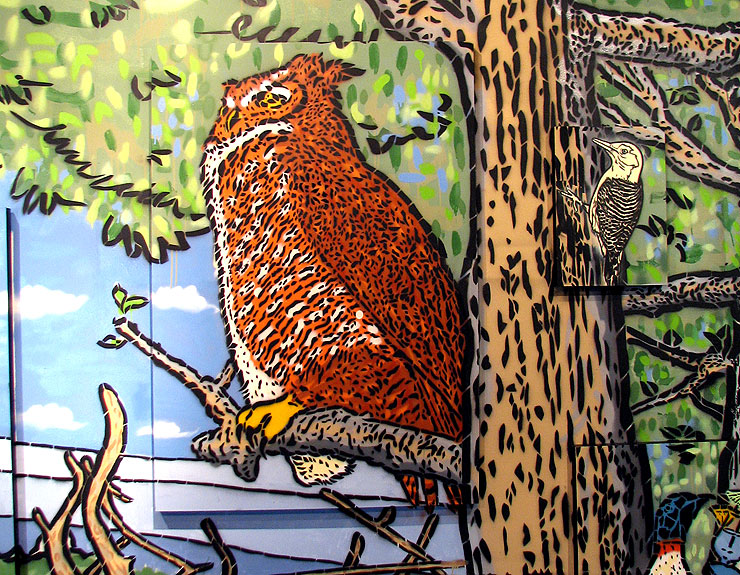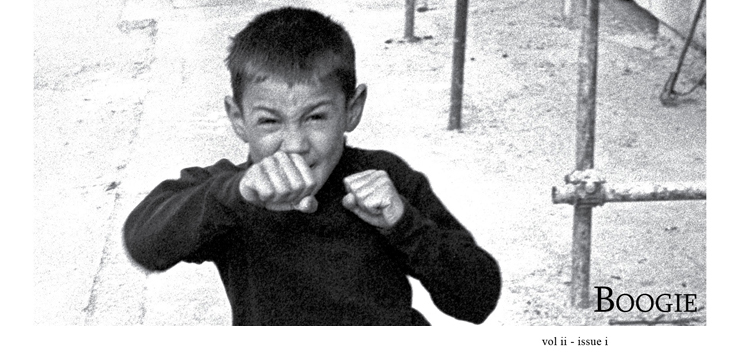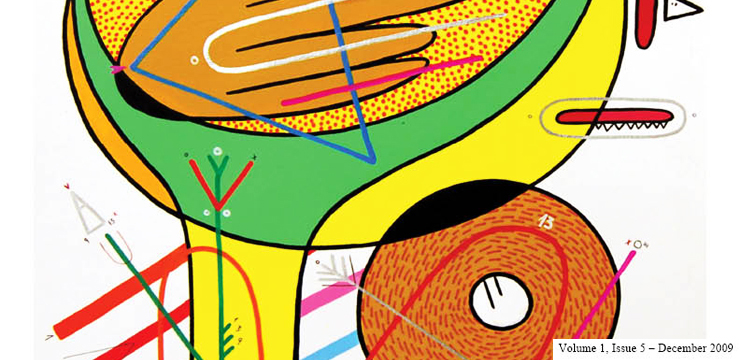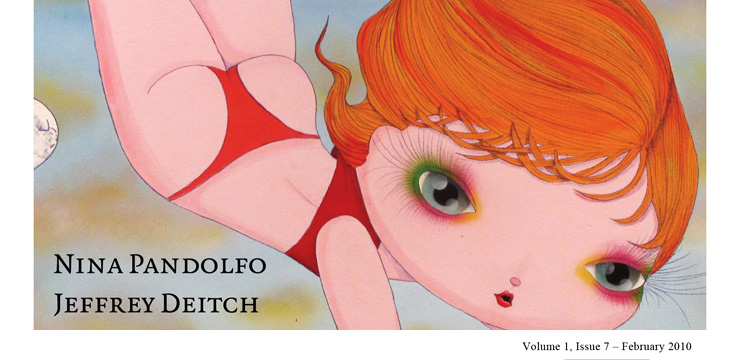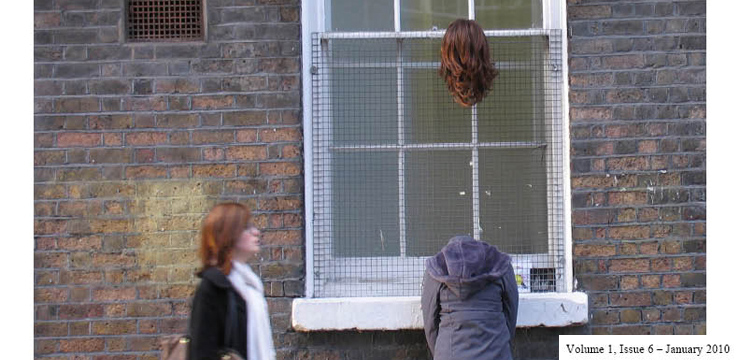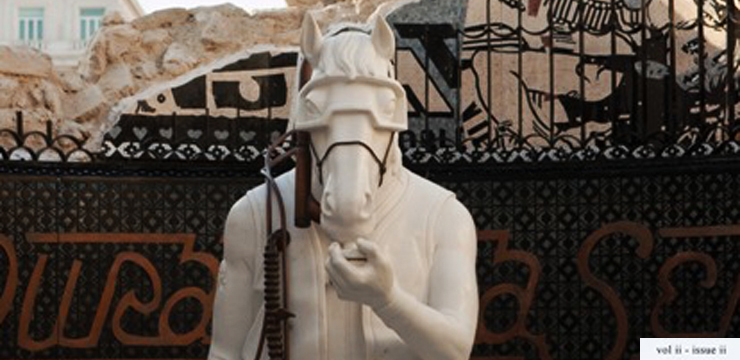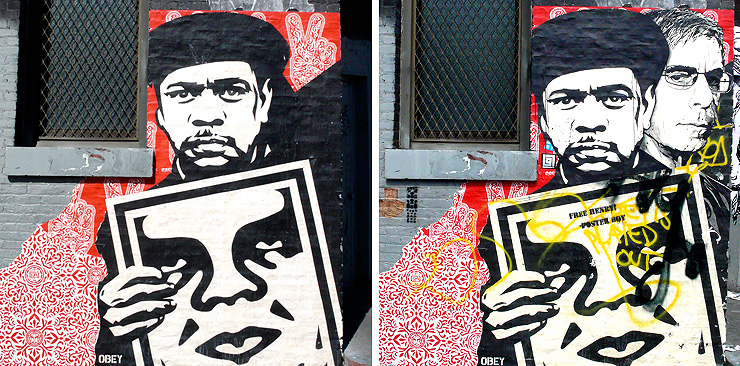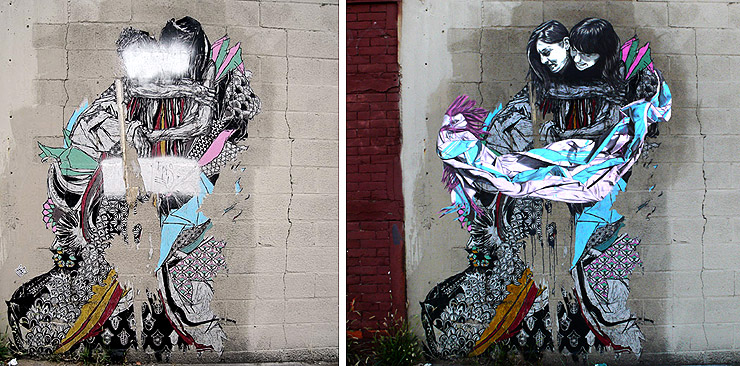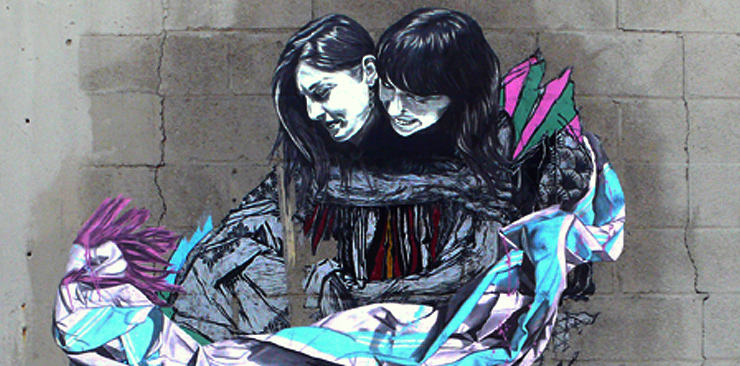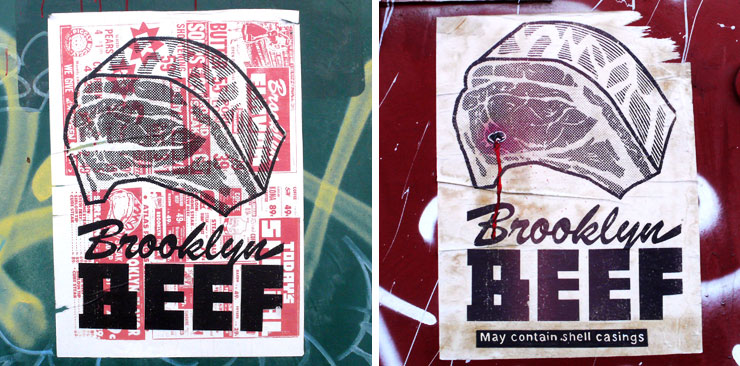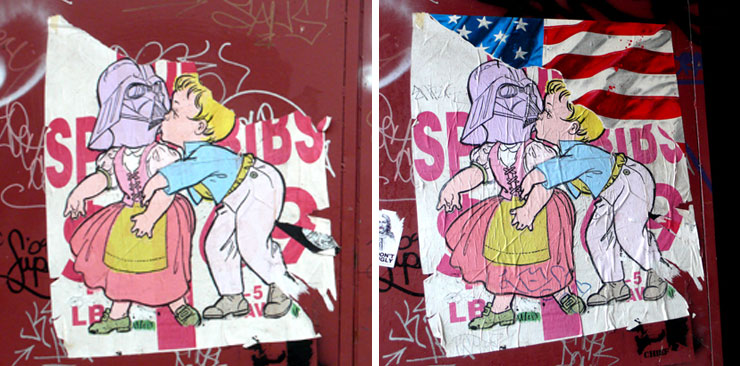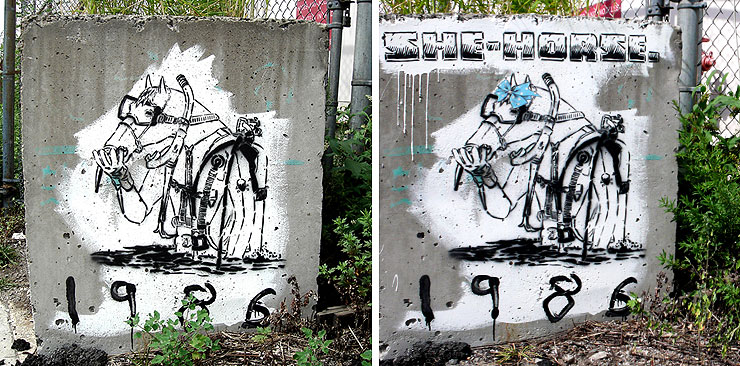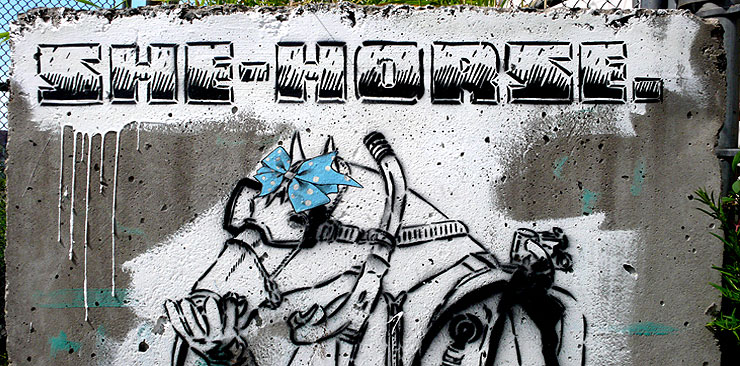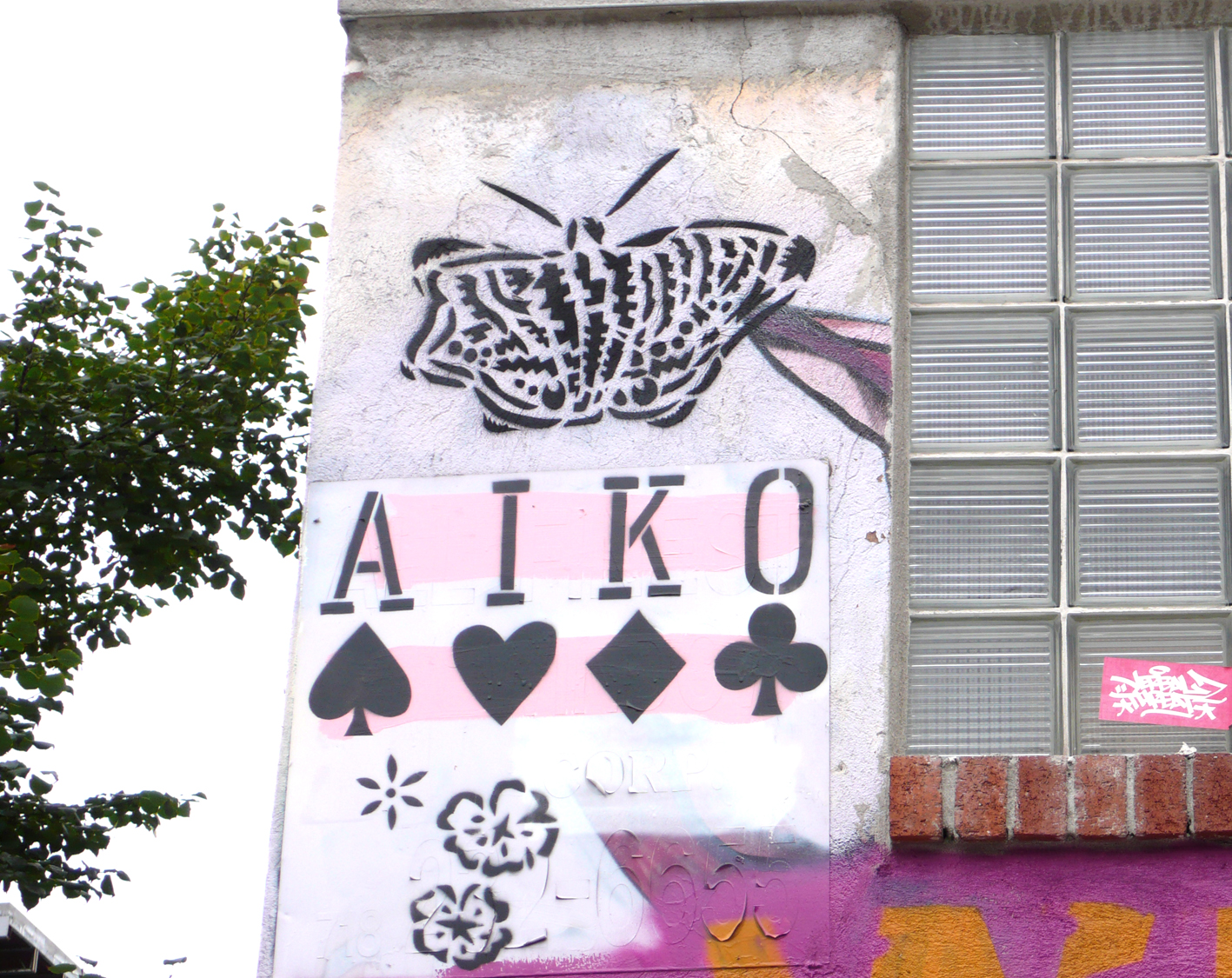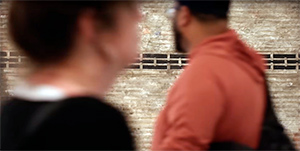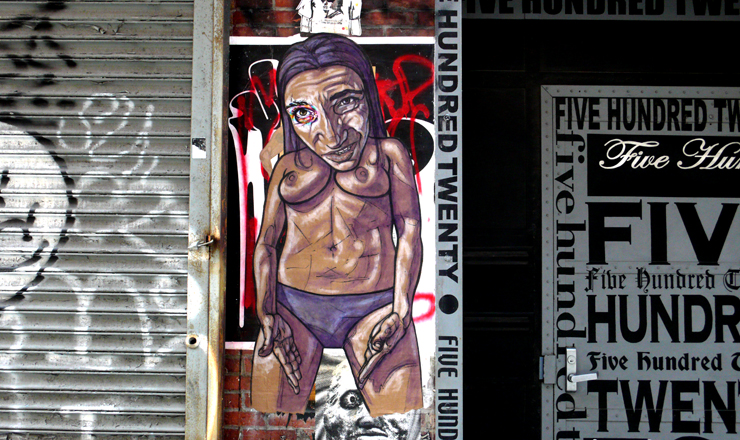
Feeling cocky in Chelsea. Quel Beast (Photo © Jaime Rojo)
BSA guest writer Robin Grearson talks about herself, the Street Artist Quel Beast, and the unknowable beast within.
I headed to Bushwick’s Wreck Room last week to talk to Quel Beast about art and see how he’s doing. He’s pasting up some work indoors this week, at Kings County, and a new street piece was almost ready for Chelsea. The Wreck Room is an unpretentious spot where secrets flow easily, and so, over beer and fried pickles, Quel Beast confided to me his frustrations, some obsessions, and what he would do if he couldn’t make art. But he remained quiet about the street piece, which made me nervous.
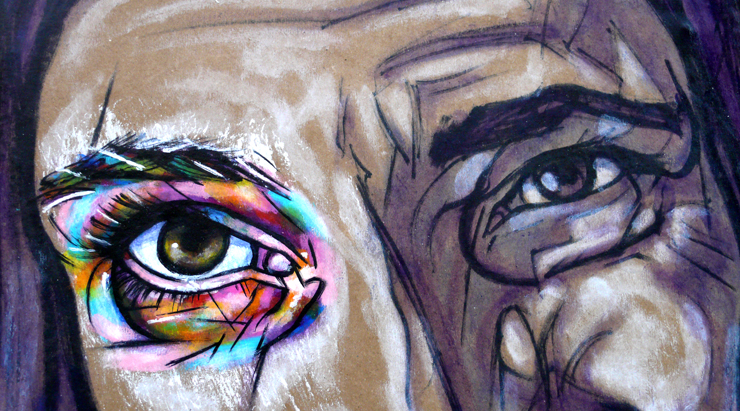
Quel Beast. Detail (Photo © Jaime Rojo)
Until today, I hadn’t seen it. It’s a woman; full length, but cocky. She taunts passers-by to check her out once, maybe twice. She’s not wearing much. That much I remembered. She’s like his Chelsea kiss, or, postcard: Dear Art Crawlers. With love from Brooklyn, Quel Beast.
He shows me on his iPhone some of the portraits for the show, called “Back That A$$ Up,” after the Juvenile/L’il Wayne song and video. It’s hours, many beers, two more locations and some wine later, before I ask about the Chelsea girl. Quel Beast answers offhandedly that she’s…weird. I’m sure he knows a better word because he says it like it’s a question. He’s into the piece, and says it exemplifies the direction he sees his style heading. But his question mark says, maybe I’ll hate it, a possibility I hadn’t considered.
I posed for the photo he’s working from to create her. So she’s me, and she’s not. I start wondering if, while painting testosterone-soaked me, her sneer has maybe gotten to him. But then, art is supposed make you feel something, which is the conversation we’ve been having. And I wonder what I will feel when I see her.
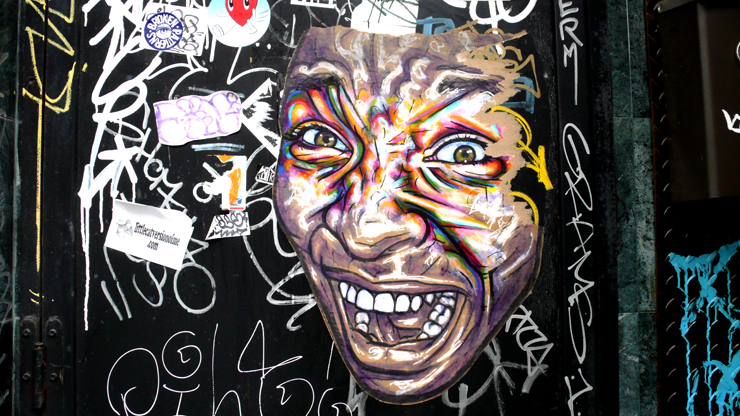
Quel Beast (Photo © Jaime Rojo)
Quel Beast compares art to music, harshly. Placed side by side, art gets its ass kicked. “Art isn’t good enough,” he says, with reverence for music’s power to evoke feeling, stir memory and stir senses. People quickly filter out tags and stickers as visual noise, he points out, adding, “You don’t have a personal experience with someone’s name, the way you can with music.”
“I hate art. Art sucks,” Quel Beast declares, and we laugh. He’s describing his exasperation with the impossibility of art to realize his ideal of it.
But even as he’s describing most art as dismissible in contrast to music, he is a little distracted, scanning stickers and tags on the tables and walls, naming the artists. “Why can’t art do what music can do?,” Quel Beast wonders, and lays down a gauntlet. “An artist has a responsibility to reach out and grab someone the same way a ridiculously awesome song does.”
So it’s natural that Quel Beast’s portraits would have music in their souls; for him, “Back That A$$ Up” is the track that conjures the flow and energy of shared experience that he aspires to render in his paintings. But the series is no fan letter: Quel Beast is looking through the video’s lens at his own agenda. He’s retrofitted his painted subjects as though they were plucked from frames of the video, undressed them, and reversed the gender roles.
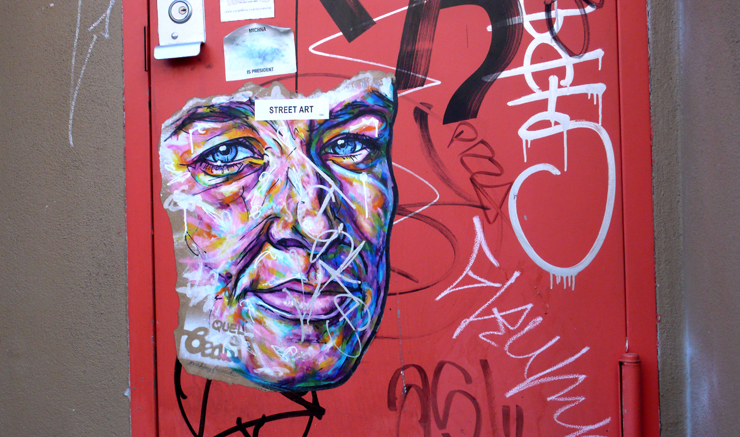
Quel Beast (Photo © Jaime Rojo)
He designed the portrait series as his inquiry into the source of our judgments. Where do conclusions come from, for instance, about a two-dimensional woman who may be posturing instead of pouting but in other ways remains unknowable? “Why is it that just because you put your body into certain positions, people will assume anything about you, your identity or your sexuality?,” Quel Beast asks, without knowing the answer.
Juvenile and L’il Wayne provide Quel Beast with audio inspiration for his paintings, but their lyrics tow the misogyny-and-hetero line. Quel Beast reveals only a cool nonchalance about this apparent collision of cultures. By co-opting the rappers’ revelers in an effort to unlock an insight or two on identity politics, won’t Quel Beast ostensibly alienate those fans who would be drawn to a show inspired by hip hop? The more secrets he tells me, the more a picture emerges of someone who doesn’t mind making people uncomfortable.
Early this morning, Quel Beast showed me the Chelsea girl. She has my straight, boyish hips, and a casual, male confidence that is impervious to judgment. Within that masculinity, though, something remains defiantly feminine. He looked at me and said with a shrug, “If there’s one thing I learned from rap, it’s how to deal with haters.” —Robin Grearson
BSA………….BSA………………BSA………….BSA………………BSA………….BSA………………BSA………….BSA………………
Quel Beast, “Back That A$$ Up”, October 16, 10 PM, Kings County, 286 Siegel Street, Brooklyn, NY 11206.
Robin Grearson is an independent writer and essayist living in New York. She has written for The New York Times.
Robin Grearson: www.robingrearson.com
Quel Beast: www.quelbeast.com, facebook.com/quelbeastart
 BROOKLYN STREET ART LOVES YOU MORE EVERY DAY
BROOKLYN STREET ART LOVES YOU MORE EVERY DAY
